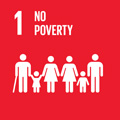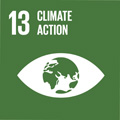- Docente: Mariella Lorusso
- Credits: 6
- SSD: L-LIN/11
- Language: English
- Teaching Mode: Traditional lectures
- Campus: Rimini
- Corso: Second cycle degree programme (LM) in Fashion Studies (cod. 9067)
-
from Jan 27, 2025 to Feb 25, 2025
Learning outcomes
At the end of the course the student is expected to acquire an expert knowledge of the necessary tools to write texts on fashion in English. With a view towards the development of professional abilities in written communication, the course will have a historical, theoretical and critical approach. It aims at improving language skills using various text-types, including literature, that are relevant in Anglo-American culture. Moreover, students are given the tools to develop critical analysis of case studies of fashion journalism drawn from the press and writing in general.
Course contents
Students will learn that fashion writing requires rigorous structuring. The course envisages an introductory theoretical framework, then it will turn to linguistic and textual analysis of practical documents. Case studies from the press and specialized magazines will be analyzed. The traditional categories of journalism will be explored with a focus on hard news, the feature, the interview and profile.
Lectures will be held in English and partly in Italian for possible translations.
Within the framework of Special Lectures, scholars and professionals are invited to hold seminars that students must attend.
Readings/Bibliography
For the final exam students will be tested on the following:
- Lecture Notes 2025 containing various examples of fashion writing
(available at Cartoleria Tecnica, Via Dante, 30)
- Fashion Journalism - History, Theory, and Practice, Sanda Miller and Peter McNeil, Bloomsbury, 2018
- Vogue On Alexander McQueen, Chloe Fox, Quadrille Publishing, 2012
recommended:
- Dizionario della moda (inglese-italiano, italiano-inglese), Mariella Lorusso, Zanichelli, Bologna 2017
-
Teaching methods
Lectures, teacher-led discussion and assignments. Interaction with students, presentations, and role-play simulations.
Assessment methods
During lectures students are required to write assignments which will be evaluated in the final mark.
The final exam will be written and will be divided into two parts: description of photos and drawings, or a short video, and a questionnaire on the Lecture Notes and books.
Attending students (at least 22 hrs attendance):
- written description of garments and accessories;
- written assignments during lectures, to be evaluated;
- Lecture Notes 2025;
- Fashion Journalism - History, Theory, and Practice, Sanda Miller and Peter McNeil, Bloomsbury, 2018 (chapters 4,5,6)
- Anna Koenig "Glossy Words: An Analysis of fashion Writing in British Vogue", Fashion Theory 10: 1-2, pp. 205-224 (included in the Lecture Notes 2025)
- Vogue On Alexander McQueen
Non-attending students:
- written description of garments and accessories;
- written questionnaire;
- Lecture Notes 2025;
- Anna Koenig "Glossy Words: An Analysis of fashion Writing in British Vogue", Fashion Theory 10: 1-2, pp. 205-224 (included in the Lecture Notes 2024);
- "Fashion Blogging and Journalism: Testimonials and Testaments of our Time", Giulia Rossi (included in the Lecture Notes 2024 for non-attending students);
- Fashion Journalism - History, Theory, and Practice, Sanda Miller and Peter McNeil, Bloomsbury, 2018 (full book);
- Vogue On Alexander McQueen
PLS NOTE: it is advisable to contact the teacher for further instructions.
Evaluation criteria will consider the following 3 aspects of the student’s performance: contents fidelity, language quality and quality of writing.
Marks will be attributed as follows (the main criteria are indicated here):
Insufficient E
0-18
Contents: inadequate due to poor logico-semantic coherence, false meanings and countersense, frequent additions and/or omissions
Language: serious errors concerning spelling, grammar, syntax, lexicon
Writing: illogical, it lacks basic parts (introduction, body paragraphs, or conclusion)
Sufficient D
18-20
Contents: just adequate with minor false meanings, omissions, additions, local lack of coherence
Language: minor errors concerning spelling, grammar, syntax, lexicon, which don’t affect comprehension
Writing: includes an introduction, thesis or objective, paragraph divisions, and conclusion, lack of interferences
Fairly good C
21-23
Contents: adequate despite inaccuracies, generalizations, minor additions and/or omissions
Language: minor errors concerning spelling, grammar, syntax, lexicon, which don’t affect comprehension. Adequate lexical choices and register
Writing: develops the thesis or objective with at least some relevant details, is organized in a pattern that is, for the most part, clear to the reader and appropriate to the thesis or objective, lack of interferences
Good B
24- 27
Contents: very adequate despite a few inaccuracies; generally coherent and complete
Language: correct spelling, grammar, syntax, appropriate lexicon and register
Writing: supports the thesis or objective with well-reasoned arguments supported by specific, concrete, and appropriate details, is effectively organized in a pattern appropriate to the thesis or objective, lack of interferences, self-confident and pleasant
Excellent A
28-30L
Contents: very adequate; complete, coherent and accurate
Language: correct spelling, grammar, syntax, appropriate lexicon and register
Writing: original and thoughtful insight about the work under discussion, thoroughly develops the thesis or objective with well-reasoned arguments supported by specific, concrete, and appropriate details, is organized in a pattern appropriate to the thesis or objective. The organization is clear, logical, and apparent. Lack of interferences, self-confident and pleasant, very adequate.
Teaching tools
PC, Wi-Fi, online TEAMS platform, video/DVD projector, overhead projector
Office hours
See the website of Mariella Lorusso
SDGs




This teaching activity contributes to the achievement of the Sustainable Development Goals of the UN 2030 Agenda.
